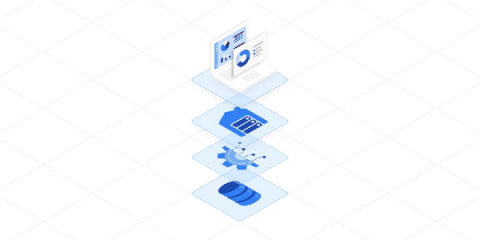Systems | Development | Analytics | API | Testing
Analytics
Pillars of Knowledge, Best Practices for Data Governance
With hackers now working overtime to expose business data or implant ransomware processes, data security is largely IT managers’ top priority. And if data security tops IT concerns, data governance should be their second priority. Not only is it critical to protect data, but data governance is also the foundation for data-driven businesses and maximizing value from data analytics. Requirements, however, have changed significantly in recent years.
Accelerating Insight and Uptime: Predictive Maintenance
Historically, maintenance has been driven by a preventative schedule. Today, preventative maintenance, where actions are performed regardless of actual condition, is giving way to Predictive, or Condition-Based, maintenance, where actions are based on actual, real-time insights into operating conditions. While both are far superior to traditional Corrective maintenance (action only after a piece of equipment fails), Predictive is by far the most effective.
Data Lakehouses: Have You Built Yours?
In traditional data warehouses, specific types of data are stored using a predefined database structure. Due to this “schema on write” approach, prior to all data sources being consolidated into one warehouse, there needs to be a significant transformation effort. From there, data lakes emerge!
Unlock Marketing Analytics Power with the Snowflake Data Cloud
Over the past two decades, marketers have faced an uphill battle in trying to turn marketing into a fully data-driven discipline. Our challenge is not that we don’t have enough data but that data has been difficult to access and use. Marketing, sales, and product data is scattered across different systems, and we can’t get a complete picture of what is going on in our businesses.
Business Intelligence: What You Need to Know
Business intelligence (BI) is the art of extracting actionable insights from your datasets. There’s a whole stack of technologies under the hood.
How to Operationalize Your Data Warehouse
Bigtable vs. BigQuery: What You Need to Know
The San Francisco Municipal Transportation Agency gets riders where they're going, thanks to Talend, Disy, and geospatial data
Every day, hundreds of thousands of residents and commuters in San Francisco, California, use the public transportation services of the San Francisco Municipal Transportation Agency (SFMTA). In addition to the city’s buses, subway system, and famous cable cars, the SFMTA manages comprehensive services including bicycle and e-scooter rentals, as well as permits for road closures.
Minimizing Supply Chain Disruptions with Advanced Analytics
January 2020 is a distant memory, but for most, the early days of the pandemic was a time that will be ingrained in memories for decades, if not generations. Over the last 18 months, supply chain issues have dominated our nightly news, social feeds and family conversations at the dinner table. Some but not all have stemmed from the pandemic.







